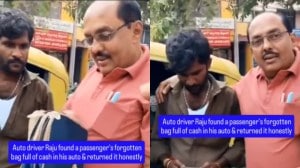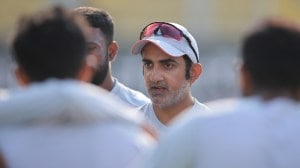How the CPM sees its future
From 1996, the CPM has been operating in a reactive mode, summed in Jyoti Basu’s famous observation that rejecting the prime ministersh...

From 1996, the CPM has been operating in a reactive mode, summed in Jyoti Basu’s famous observation that rejecting the prime ministership was a “historic blunder”. In the nine years since 1996, the CPM has metamorphosed under the pressure of political ‘necessity’ into a party that is willing to engage in the complexities of governance at the national level. The draft political resolution, that will be deliberated upon at the 18th party congress in New Delhi this April, testifies to the changes that have occurred in the external environment and internally. Instead of merely continuing its “struggles” from the outside, the CPM is preparing to seize and use the momentum created by its support to the UPA to push its agenda beyond its fiercely cherished “independent role”, using its new-found presence to expand its sphere of influence beyond New Delhi, West Bengal, Kerala and Tripura.
In ’96, the CPM would have blundered on till it fell flat on its face. Now, the party is cannier, having learnt that influence and strength are different values and that it needs to leverage one against the other to get on. If the CPM seems more down to earth now, crucial to this has been the experience in West Bengal, where “creatively applying Marxism to the living problems of India society” has ensured the perpetuation of the Left Front for 28 years.
“Praxis” is the idea; the absence of righteous self-justification and jargon in the draft is a pointer to how the CPM plans to function. It seems to have decided that evangelical missions to convert the converted are a waste of time; instead it plans to “enter into adjustments” during polls for “specific electoral purpose(s)”; the party is upfront too about its intentions in that these adjustments are “not to be treated as durable alliances”. So that party cadres do not confuse the tactics with “parliamentary opportunism”, the draft points out that the requirements of electoral understanding will not “override” the independent role of the party.
Decoded, all this adds up to an experiment in which the CPM is converting itself from being pious pundits into practical politicians, finally getting the point of Gramsci’s famous exhortation that “leadership should not follow old schemas but should innovate”. Shedding the “residues of mechanism”, another Gramscian advice, the CPM has been busier than ever before in recent months. In “following the necessities of practical activity,” the party hitched up with the Congress in Maharashtra, the RJD in Bihar, brokered in the fight between the RJD, Congress and the JMM in Jharkhand, shared platforms with civil society groups and discarded its inhibitions on caste based formations, admitting that caste as a cohesive force.
As a contingency plan, the draft political resolution is a declaration that the CPM intends to zigzag its way into the central arena of Indian politics. To do so, it admits to the need to convert the creaking machinery of a highly structured political organisation into a supple player capable of negotiating the viciously complicated course of Indian politics. In contrast to the 17th party congress resolution that dealt at great length with the “threat” posed by the BJP, the new draft leapfrogs over the past to arrive at a new praxis on the “third alternative” that will have to be built from scratch.
A fresh start and new tactics seem to be the way forward and the draft is clear that the “process of formation of such a third alternative”, which is distinct from electoral understandings for “specific elections”, must begin “by drawing the non-Congress secular bourgeois parties and other democratic forces into campaigns and struggles on common issues”.
Quite how far the CPM is prepared to go in pursuit of its long-term goal is unclear; for the moment, its efforts appear to be directed at using the caste-class overlap to build networks with “all social causes which help fight obscurantism, socially regressive customs and patriarchal and feudal practices”. What is not as yet obvious is how the CPM intends to expand its base with rudimentary party organisations in most of the populous parts of the country. To take on such an ambitious agenda, especially in a period of internal transition — Harkishen Singh Surjeet is stepping down and Prakash Karat is taking over — implies that the new leadership is confident of engineering the metamorphosis.
The party machinery will “need to be lubricated” to negotiate this obstacle course. Parleying with the top leadership in New Delhi is different from tackling the “patronage” politics so widespread at the grassroots. Even if the CPM succeeds in leading the marginalised, whose numbers the party predicts will rise as the liberalisation process moves forward, it still needs to work out the issues it will adopt as its own. The party’s aim to balance and arbitrate between competing political groups and increase its following at the cost of these groups, may be a complicated way of saying that short of “opportunism” it will do everything to extend it appeal across the country, pursuing a mission that it aborted in 1996.
- 01
- 02
- 03
- 04
- 05































